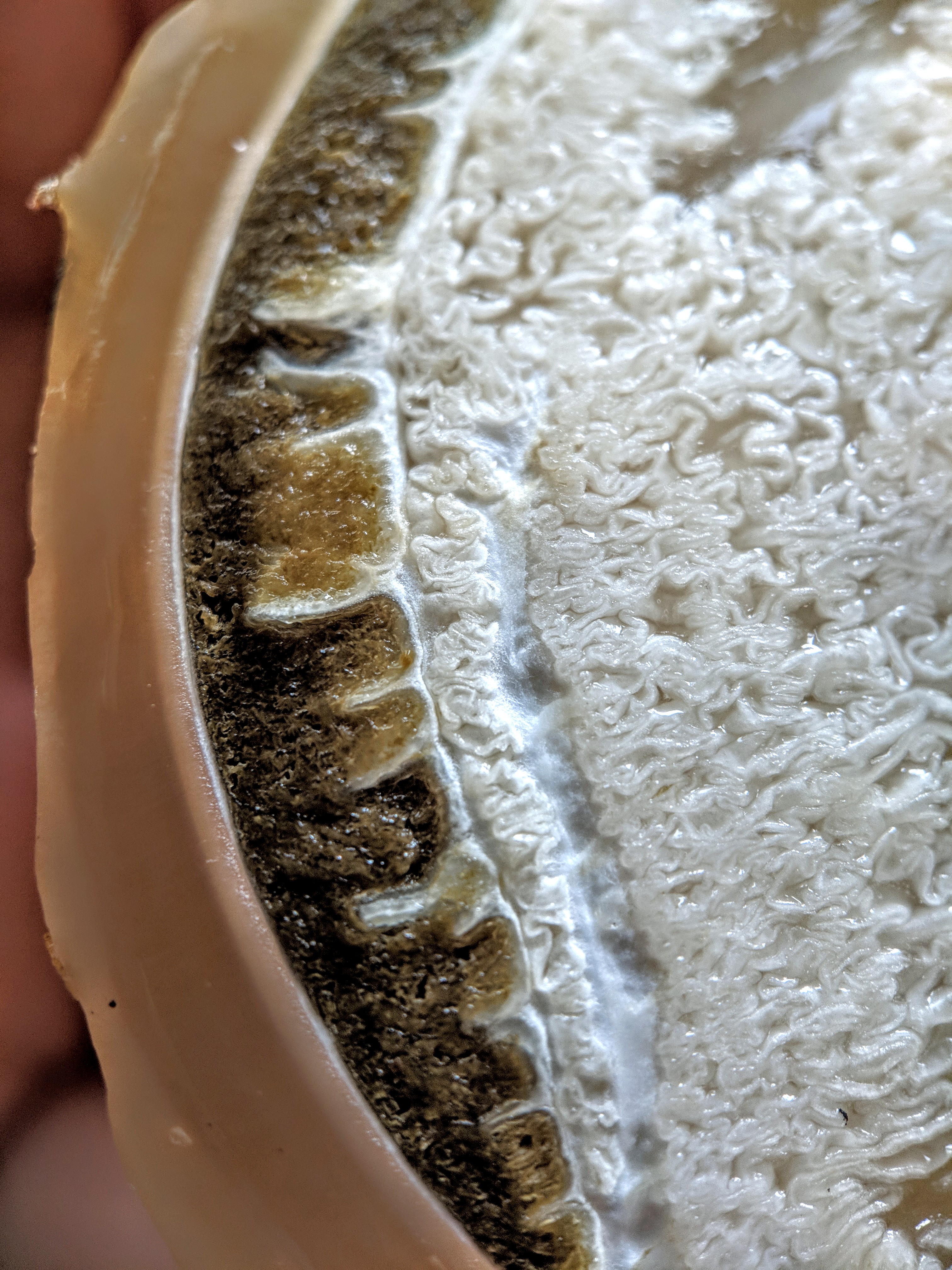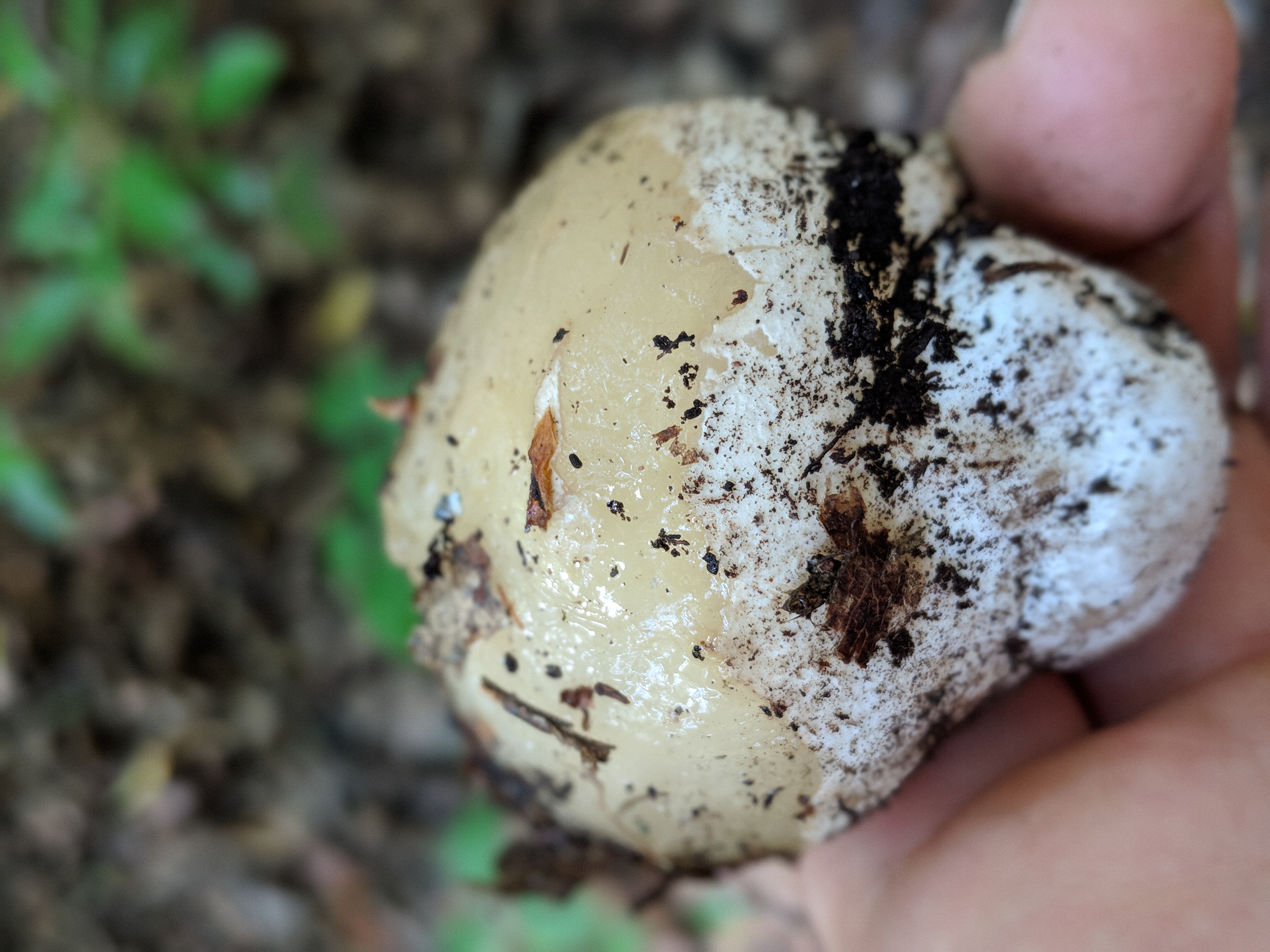
Recently, roaming the PA forest, I found what I thought might be an Amanita phalloides egg. Here's what it looked like before I cut it up.

Turns out it wasn't an Amanita at all, but actually a stinkhorn in the genus Phallus.
When allowed to mature, this giant egg, almost three inches in diameter, would have exploded into an impressive display, most likely something like this:

Sadly, I killed it before it had an opportunity to fully display itself, thinking I would get a great cross section of a deadly Amanita.
However, in the future, should I find such an egg again, I will instead bring it indoors and place it in moist potting soil with a camera set up to take time lapse and, if everything went to plan, I would get one awesome slideshow of that phallic fruiting body popping out over a span of just a couple of hours.
However, the first image is what I thought was particularly interesting. Take a look again.

My macro lens allows you to see the coiled up mushroom flesh very well in this photo.
The dark green area would be the mature spore bearing surface, while the gelatinous brown layer will eventually liquify into a slime. When the fruiting body is mature, that slime would be suffused with mature spores. Flies and other bugs would be drawn to the slimes foul odor, hence stinkhorn, and when they landed to feed they would take the spores with them.
Most of the white portion would make up the stalk of the mushroom, and as you can see here the material is already very well developed and getting ready to spring out of its egg.
The final flesh would be foamy in texture and hollow, easily cut, crushed or torn.
Lastly, just so you don't think I'm crazy, this is what a deadly toxic Amanita phalloides egg looks like.

The resemblance isn't perfect, but I really wanted it to be an Amanita, and I thought maybe it had been water logged or something. Just another lesson in not forcing round pegs through square holes and being sure to pay attention to objective observations over aspirational conjecture.
Photos are mine except photo 3 and 5: [3]Phallus impudicus, by Jörg Hempel, CC-SA-3.0, via Wikimedia commons
[5]Amanita phalloides egg, by Susulyka, CC-SA-4.0, via Wikimedia Commons
Information Sources:
- Kuo, M. (2013, May). Amanita phalloides . Retrieved from the MushroomExpert.Com Web site:
- Kuo, M. (2006, September). Phallus impudicus & P. hadriani: The common stinkhorn. Retrieved from the MushroomExpert.Com Web site